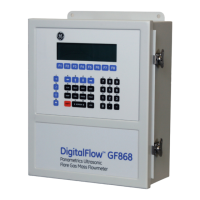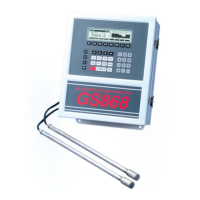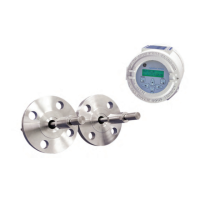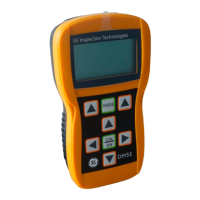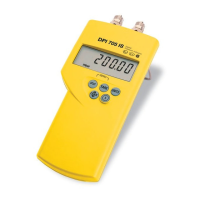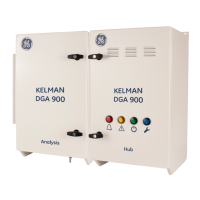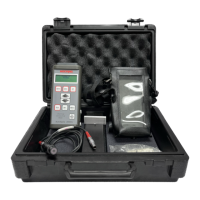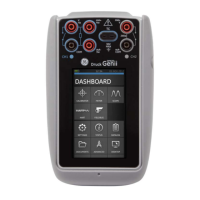March 2008
1-30 Programming Site Data
TransFlection SIGNL
Options (cont.)
7. Press [ENT] to accept the current Rep Period 1 value, or use the
[F1]-[F4] keys and [←] and [→] keys to select the desired value
(from 100 to 3200).
8. Press
[ENT] to accept the current Rep Period 2 value, or use the
[F1]-[F4] keys and [←] and [→] keys to select the desired value
(from 100 to 3200).
Use these two options to set the minimum and maximum time
interval between transmissions. Increasing the repetition period
reduces the amount of background noise in the signal at the expense
of reducing the maximum measurable flow rate. Since the DF868
adjusts repetition periods to optimize the flow measurement (taking
flow rate, transducer frequency, and signal characteristics into
consideration), you must enter a range, from 100 to 3200 µsecs. REP
PERIOD 1 specifies the shortest repetition period possible, with a
default of 200 µsec. REP PERIOD 2 specifies the longest repetition
period the DF868 can use, and defaults to a value of 800 µsec.
Note: Once the DF868 determines the appropriate repetition period
within the limits of REP PERIOD 1 and REP PERIOD 2, it
alternates between transmits at the determined repetition
period and a period that is 20% longer. For example, if the
DF868 selects a repetition period of 200 µsecs, it first
transmits a series of bursts at 200 µsecs, followed by a series
at 240 µsecs. The DF868 then compares the receive signals of
the first series of bursts to those of the second series. If the two
series of signals are too dissimilar, the DF868 displays an
incoherent signal error.
9. Press
[ENT] to accept the current XMITS Per Reading value, or use
the numeric keys to enter the desired value (from 1,024 to 30,000)
and press
[ENT].
This option specifies the number of transmissions used to obtain a
flow rate measurement. While reducing this number improves the
flowmeter’s response time, it also reduces its sensitivity in poor
signal conditions. The default value is 5,000.
Note: To calculate the response time, divide the XMITS PER
READING value by the number of transmissions per second.
To determine the number of transmissions per second, divide 1
sec by the repetition period. For example, if the XMITS PER
READING value is 10,000 and the repetition value is 200
µsec, the number of transmissions per second is 5,000
(1/200), and the response time is 2 sec (10,000/5,000). Other
examples appear in Table 1-13 on page 1-31.

